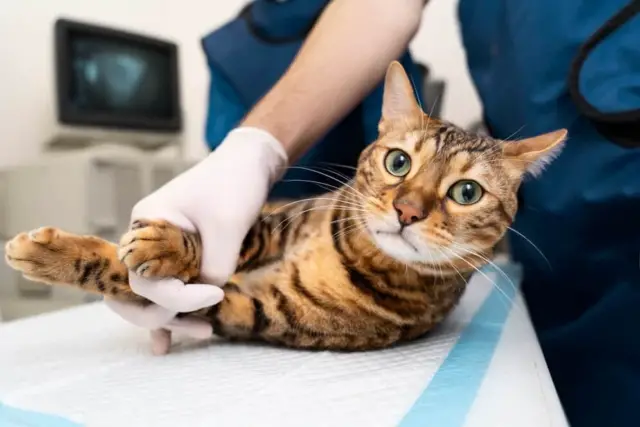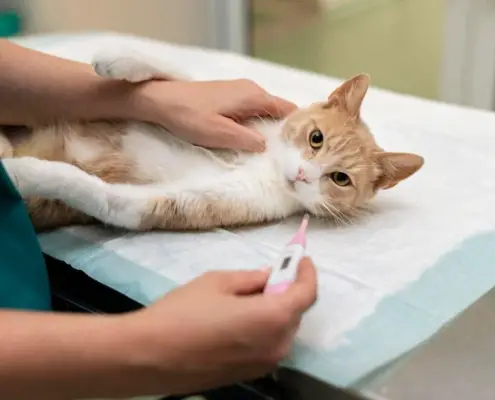
Cats, like humans, can be susceptible to various health conditions, and bone diseases are no exception. Understanding bone diseases in cats is crucial for pet owners to provide the best care possible for their feline companions. This comprehensive guide aims to shed light on the different types of bone diseases that can affect cats, their causes, symptoms, diagnosis, treatment options, preventive measures, and how to live with a cat with a bone disease.
Common types of bone diseases in cats
There are several common bone diseases that cats can experience. One such condition is osteoarthritis, which often affects older cats and causes degeneration and inflammation of the joints. Another common bone disease is osteomyelitis, an infection that can occur when bacteria enter the bones. Osteosarcoma, a type of bone cancer, is also prevalent in cats and can be quite aggressive. These are just a few examples of the bone diseases that cats may encounter.
Causes and risk factors of bone diseases in cats
Bone diseases in cats can have various causes and risk factors. For instance, osteoarthritis can develop due to age-related wear and tear on the joints, obesity, or previous injuries. Osteomyelitis, on the other hand, is often caused by a bacterial infection that may enter the bones through open wounds or dental disease. Osteosarcoma, the bone cancer mentioned earlier, can be influenced by genetic factors, exposure to radiation, or certain viral infections. Understanding the causes and risk factors can help pet owners take appropriate measures to prevent or manage these diseases.
Symptoms and diagnosis of bone diseases in cats
Recognizing the symptoms of bone diseases in cats is crucial for early intervention and treatment. Some common signs include lameness, difficulty in moving, reluctance to jump or climb, swelling around joints, pain or sensitivity when touched, and changes in behavior or appetite. If you notice these symptoms in your cat, it is essential to consult a veterinarian for a thorough diagnosis. Diagnostic tests may include physical examinations, X-rays, blood tests, and even biopsies to determine the specific bone disease affecting your feline companion.
Treatment options for bone diseases in cats
Treatment options for bone diseases in cats depend on the specific condition and its severity. In the case of osteoarthritis, medication, physical therapy, weight management, and joint supplements can help alleviate pain and improve mobility. Osteomyelitis may require a combination of antibiotics, surgery to remove infected bone, and wound care. Treatment for osteosarcoma often involves a combination of surgery, chemotherapy, and radiation therapy. It is crucial to work closely with a veterinarian to determine the most appropriate treatment plan for your cat’s specific bone disease.
Preventive measures for bone diseases in cats
While not all bone diseases can be prevented, there are steps that cat owners can take to reduce the risk. Maintaining a healthy weight for your cat through proper diet and exercise can help prevent conditions like osteoarthritis. Regular dental care, such as brushing your cat’s teeth and scheduling professional cleanings, can reduce the likelihood of developing osteomyelitis. Additionally, providing a safe environment for your cat, free of hazards that may lead to injuries, can help minimize the risk of bone diseases. Consult with your veterinarian for personalized preventive measures based on your cat’s age, breed, and overall health.
Living with a cat with a bone disease
Living with a cat with a bone disease can present certain challenges, but it is possible to provide a happy and fulfilling life for your feline companion. Ensure that your cat’s environment is safe and comfortable, with easy access to food, water, litter boxes, and resting areas. Depending on the bone disease, your cat may benefit from modified furniture or ramps to aid mobility. Regular check-ups with the veterinarian and adherence to the prescribed treatment plan are crucial for managing the disease and maintaining your cat’s quality of life.
Frequently asked questions about bone diseases in cats
1. Can bone diseases be cured in cats?
While some bone diseases can be managed or treated, a complete cure may not always be possible. The focus is often on improving the cat’s quality of life and managing symptoms.
2. Are bone diseases hereditary in cats?
Certain bone diseases, such as osteosarcoma, can have a genetic component. However, not all bone diseases are hereditary, and other factors like age, lifestyle, and environmental factors can also play a role.
3. Can cats with bone diseases live a normal life?
With proper management and care, cats with bone diseases can lead fulfilling lives. It may require adjustments to their environment and regular veterinary monitoring, but many cats can still enjoy a good quality of life.
Resources for further information on bone diseases in cats
For further information on bone diseases in cats, consider consulting reputable sources such as:
- American Association of Feline Practitioners (AAFP):www.catvets.com
- International Cat Care (ICC):www.icatcare.org
- Cornell Feline Health Center:www.vet.cornell.edu/fhc
These organizations provide valuable resources, articles, and guidelines to help cat owners better understand and manage bone diseases.
Conclusion
Being aware of bone diseases in cats is essential for providing optimal care and support to our feline companions. By understanding the types, causes, symptoms, and treatment options, cat owners can take proactive measures to prevent these diseases or ensure early intervention. Remember to consult with a veterinarian for personalized advice and guidance tailored to your cat’s specific needs. With proper care and management, cats with bone diseases can still lead fulfilling lives filled with love and companionship.
If you enjoyed my article, I would appreciate you sharing it with your network.

Sima Ndlebe
Sima writes for CatBuzz. He is interested in Cats, Health and Fitness, and Entrepreneurship.
Published: 11 October 2023
Related Articles
Disclaimer
The content found on CatBuzz.org is presented on an "as is" basis and is intended for general consumer information and education purposes only. Any utilization of this information is voluntary and solely at the user's own risk.
None of the articles or content should be regarded as, or used in place of, veterinary medical advice, diagnosis, or treatment. The information provided on the website is purely for educational and informational intentions and should not be considered a substitute for professional guidance from a veterinarian or other qualified expert. The articles are designed to inform consumers about veterinary healthcare and medical matters that may impact their cat's daily life. It should be noted that this website and its services do not constitute the practice of any form of veterinary medical advice, diagnosis, or treatment. CatBuzz.org explicitly disclaims any liability for any direct or indirect damages or losses that may arise from the use of or reliance on the information contained within the content.
Consumers must consult a veterinarian, veterinary specialist, or another qualified veterinary healthcare provider when seeking advice regarding their cat's health or medical conditions. It is important not to ignore, avoid, or postpone seeking medical advice from a veterinarian or other qualified veterinary healthcare provider solely based on information obtained from this website. If you believe that your cat may be experiencing a medical issue or condition, it is imperative to promptly contact a qualified veterinary healthcare professional.



